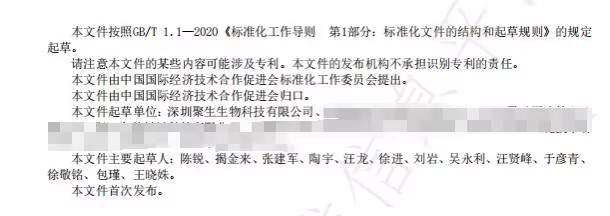Recently, eSUNMed Biotechnology (Shenzhen)Co.,Ltd., in collaboration with industry partners, officially published the group standard “Medical High Molecular Weight Polylactic Acid” on the National Group Standards Information Platform. This initiative effectively addresses the lack of standards in this field.

eSUNMED has established the Medical High Molecular Weight Polylactic Acid standard for the first time, setting a new benchmark for the industry. This standard not only enhances the quality requirements for medical-grade polylactic acid (PLA) but also promotes its extensive application in the medical field.
Polylactic acid (PLA) is a biodegradable polyester material with excellent biocompatibility. It is typically produced from renewable resources such as corn and sugarcane, where lactide monomers are obtained through fermentation and then synthesized via ring-opening polymerization.
Key Performance Indicators of Polylactic Acid:
The performance of polylactic acid (PLA) is primarily evaluated through a series of key indicators, including:
- Molecular Weight: Molecular weight is a core factor in assessing the physical properties and biodegradability of PLA. The higher the molecular weight, the better the strength, heat resistance, and biodegradability. Its molecular weight typically ranges from 10,000 to 1,000,000.
- Melting Point and Crystallinity: The melting point and degree of crystallinity significantly affect PLA’s thermal stability and processing characteristics. A higher melting point and crystallinity usually indicate better thermal stability and processing performance. PLA’s melting point typically ranges from 150¬∞C to 180¬∞C, and its crystallinity fluctuates between 20% and 50%.
- Glass Transition Temperature (Tg): The glass transition temperature (Tg) is another important factor influencing the physical and mechanical properties of PLA. A higher Tg means PLA has better thermal stability and mechanical performance. The Tg typically falls in the range of 50°C to 70°C.
- Flowability: Flowability is directly related to PLAвАЩs performance during processing as well as the appearance and quality of molded products. Good flowability helps in producing more uniformly dense products. The flowability of PLA generally ranges from 1 to 1000 pa¬Јs.
These performance indicators are essential for determining the suitability of PLA for various medical applications and other specialized uses.
In the medical field, polylactic acid (PLA) is used to produce various medical implants, such as artificial joints, heart valves, and orthopedic fixation materials (e.g., absorbable screws and plates). PLA also serves as a drug carrier for controlling the release rate of medications, extending their efficacy, and reducing side effects. Moreover, PLA microspheres are being widely applied in the medical aesthetics field.
eSUNMED focuses on technological innovation and product quality by introducing advanced production equipment and technical talent. The company continually enhances the production efficiency and product quality of PLA. Additionally, Shenzhen eSUNMED actively collaborates with universities and research institutions to jointly advance the development and application of PLA technology.
eSUNMED is dedicated to the research, development, and industrialization of biomedical polymer materials, medical 3D printing materials, and downstream medical supplies and equipment. Located in the Longhua District of Shenzhen, the main operational base spans over 2,000 square meters, featuring nearly 400 square meters of Class 100,000 clean rooms and a 100-square-meter Class 10,000 purification laboratory. The facility meets the GMP standards for the production of pharmaceutical excipients and sterile medical devices, complying with industry standards for biomedical polymer materials.
eSUNMEDвАЩs main products and services include offering medical-grade raw materials such as PLA, PGA, PCL, PLGA, PLCL, PEG in various molecular weights, as well as customized polymer solid microspheres with particle sizes ranging from 10 to 100 microns, and tailored medical devices, surgical implants, and drug delivery systems made from polylactic acid (PLA) and polycaprolactone (PCL).
eSUNMED warmly invites research institutions or enterprises with relevant needs to contact us for custom product development or to explore new application areas together!

